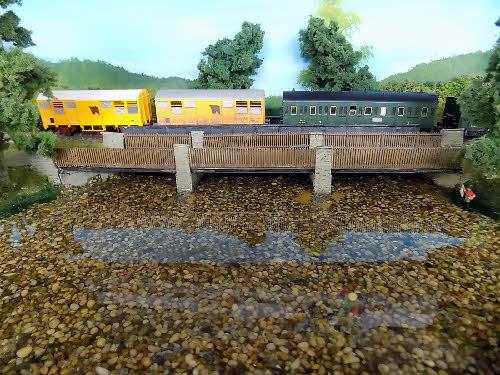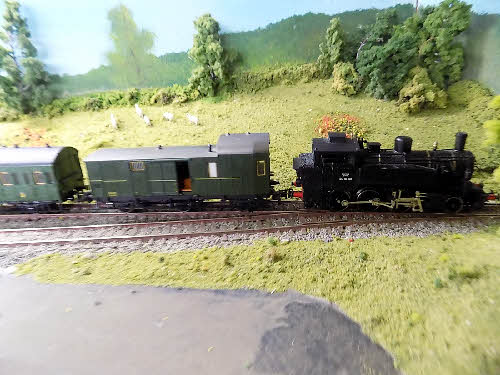
Tram de Hybouville
is a rural steam tramway running from a junction with the SNCF (French
National Railway) Coastal Line from Dieppe to le Treport at
Bellengreville crossing the valley floor and the River Eaulne at Pont
d’Eaulne before climbing through the Hybouville
to St Nicolas d’Aliermont. Other stations are Bellengrevillette,
St. Sulpice and Hybouville. Pont d’Eaulne et Travaux de Gravier is a
halt on the north side and a rail served gravel works and siding on the
south side of the River Eaulne. Using real water marks the importance of
the river.
St Nicolas
d’Aliermont is famed for manufacturing clocks and remains industrially
active with several factories three of them next to the theoretical
location of the tramway's terminus. Had the Tram de Hybouville been
built goods services might have survived into the 21st
Century and then it might have become a tourist railway!
French Secondaire
The secondaire railways are very roughly the French equivalent of light
railways. They were developed to stimulate the rural economy
particularly farming and graded general, local and tram, tram being the
bottom of the pile. Funding came from central government, departments
and communes (parish). Their history is both interesting and
contradictory! They grew twelve fold between 1870 and 1912. At the end
of 1912 an additional two and a half thousand kilometers were under
construction or authorized but most of these were prevented from coming
to fruition by the First World War. The War had a major impact on
existing lines with war damage, deferred maintenance, mobilization of
staff and the removal equipment, in certain cases entire railways. After
the War secondaire continued to expand reaching their peek mileage in
about 1925 with the last secondaire opening in 1928. Improving road
transport meant the next decade was one of rapid decline. In 1938 the
transport Co-ordination law caused many secondaire to closed or loose
their passenger service. The Second World bought the same problems as
the First but to already run down railways. Services on the lines that
survived the 1938 law were as far as possible intensified and some
freight only lines reintroduced passenger services. At the end of the
War many lines were in a run down state and closed. By 1947 mileage was
down to a third of it peek and by 1962 it was the similar to 1870.





.jpg)
.jpg)
.jpg)
.jpg)
.jpg)



.jpg)
.jpg)
.jpg)
.jpg)
.jpg)
.jpg)
.jpg)